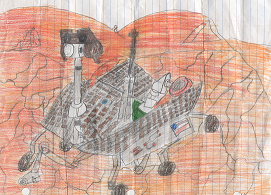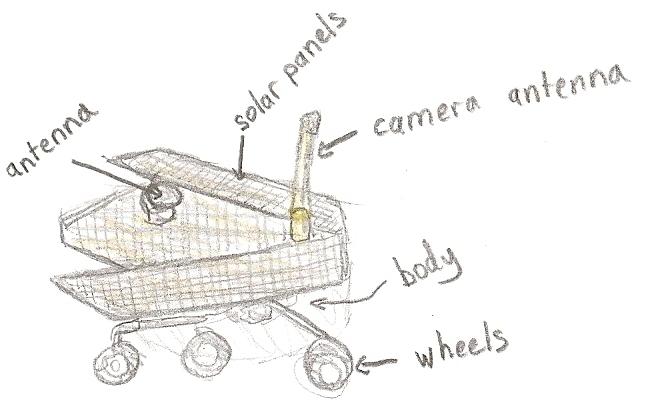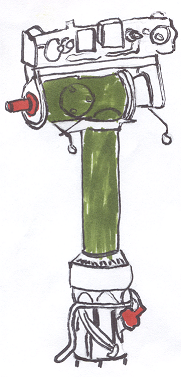
rover
Body: The rover's vital organs are stored in it's Body, which resembles a box in shape and is approximately 1 yard by 1 yard by 1 yard. The body protects all of the equipment from the vast range of temperatures that are found on the Moon's Surface. It is couted with a thin layer of gold paint, which helps keep the heat in when the temperature drops. This box is made up of a strong new material called RXF1. This material is light weight and is made up of polyethylene, which is the material that most trash bags are made up of. RXF1 protects the rover from radiation and is three times stronger than aluminum, yet is 2.6 times lighter. The box will sufficiently protect all the rover's vital equipment from radiation, temperature, and the elements. [19][9]

rover

 camera
camera